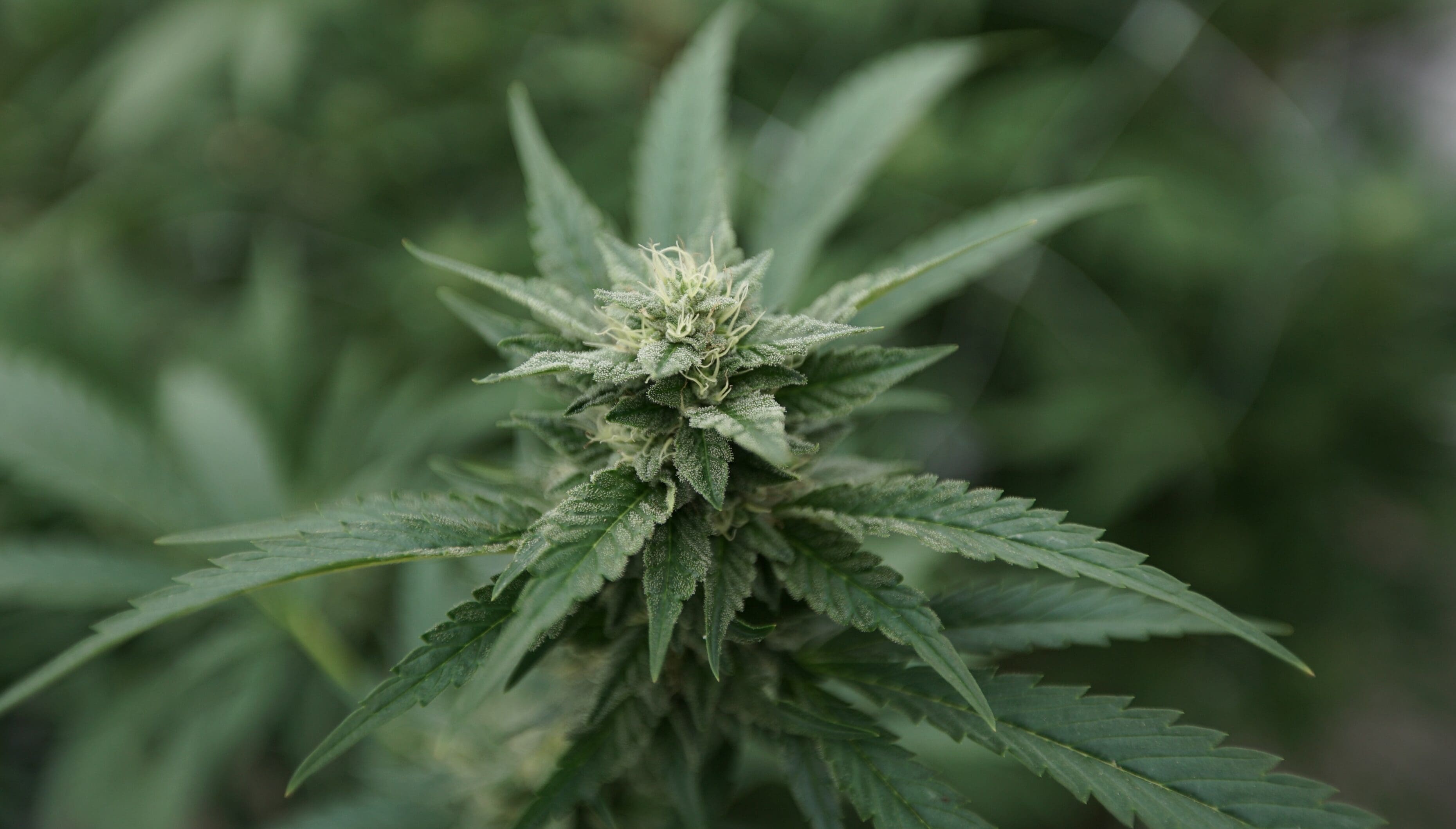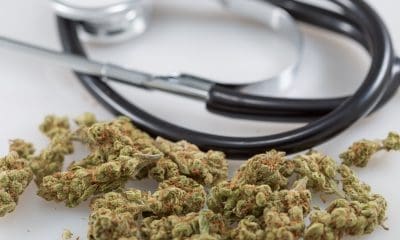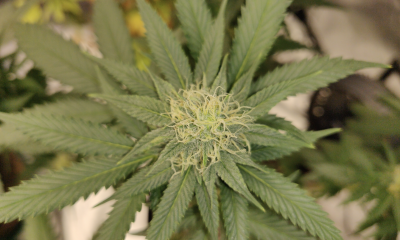Science & Health
Medical Marijuana Patient Enrollment Grew 610% Since 2016, Showing ‘Increasing Cultural Acceptance Of Cannabis,’ Federal Study Finds

A new federal study shows that enrollment in state-legal medical marijuana programs increased significantly across the U.S. in recent years.
The researchers—from the Centers for Disease Control and Prevention (CDC), the Department of Veterans Affairs (VA) and the University of Michigan—noted that the uptick comes amid “increasing cultural acceptance of cannabis, recognition of the harm of the ‘war on drugs’ (for example, mass incarceration and related consequences, such as family separation, trauma, and economic loss), and interest in the potential therapeutic properties of cannabis.”
Between 2020 and 2022, the number of enrolled medical marijuana patients in the U.S. increased by a third (33.3 percent), says the report, which was funded by the National Institute on Drug Abuse (NIDA) and published this week in the journal Annals of Internal Medicine. All told, the country had more than 4.1 million registered patients in 2022, up from about 3.1 million in 2020.
At the same time as the medical marijuana patient population has generally grown across the country, however, the study also found that jurisdictions with legal adult-use cannabis have generally seen patient registrations fall.
To arrive at their conclusions, researchers looked at available data from 39 U.S. jurisdictions with legal medical marijuana. Of those, 34 reported patient enrollment, 19 included information on qualifying conditions and 29 provided information on the number of physicians authorized to recommend marijuana.
The team previously showed that, between 2016 and 2020, the number of enrolled patients in the U.S. grew “dramatically,” the report says, rising from about 678,000 in 2016 to more than 3 million in 2020.
“This analysis indicates a 610% increase in patient number in the United States from 2016 to 2022.”
California was excluded from the analysis because, as the researchers noted, “it has a voluntary registry that may not be accurate” with respect to the state’s actual medical cannabis patient population.
The research team said it decided to update its analysis to look at the growth in patient numbers over the last few years in light of the possible federal rescheduling of marijuana to Schedule III of the Controlled Substances Act.
“Given this potential federal policy shift, which would acknowledge therapeutic potential of cannabis and reduce research barriers,” the study team largely comprised of federal workers wrote, “understanding the current national landscape of medical cannabis use and authorization patterns is essential to help inform future public health efforts related to cannabis.”
The study’s lead author, Kevin Boehnke, a University of Michigan Medical School anesthesiology professor, said in an email to Marijuana Moment that the report “provides a high-level view of the evolving national cannabis landscape at a time when cannabis may be rescheduled.”
“This scheduling change may open up many policy questions into how cannabis regulated at the federal levels, so understanding how many people may be affected and ensuring their needs are met in subsequent policy is critical,” Boehnke said. “On the clinical side, this study shows that medical cannabis isn’t going anywhere, and it’s important to figure out how best to effectively integrate cannabis into medical treatment given the widespread use.”
The seven-person team behind the new report includes researchers at CDC’s cannabis strategy unit, VA’s Ann Arbor Healthcare System and the University of Michigan Medical School. It includes a notable acknowledgement by federal officials that “despite increased use of cannabis for medical and nonmedical purposes, enforcement of cannabis prohibition continues to disparately affect groups that have been marginalized for racial or socioeconomic reasons.”
Beyond the growing number of states that are legalizing medical marijuana and related “increasing acceptance of cannabis,” the researchers suggested that pandemic-era policies may have also played a role in the rise in patient registrations.
“The study period encompassed the COVID-19 pandemic, during which many medical cannabis markets were designated ‘essential’ industries, thereby increasing access through curbside pickup, delivery services, and telemedicine visits for licensure,” authors wrote, adding the pandemic “may have affected the number of people who obtained cannabis licensure for anxiety and PTSD because pandemic-related stress often resulted in worsened mental health conditions.”
Only two of 15 jurisdictions with legal adult-use marijuana markets saw patient registrations rise during the study period: Massachusetts and Maine. All others saw enrollment fall.
“This decreasing enrollment was most dramatic in Arizona,” the report says, “which had 295,295 patients in 2020 (411.3 per 10,000 persons in the population) and only 129,836 in 2022 (176.4 per 10,000) after the adult-use law was implemented in 2021.”
As for why registrations in states with legal marijuana fell, researchers said it could result from patients “opting out because they no longer need legal cover for nonmedical adult use,” due to “licensing fees or the inconvenience of certification visits” or simply because they’re buying adult-use products and using them medically.
In terms of qualifying conditions for state programs, chronic pain and PTSD were by far the most common.
“Chronic pain remained the most common patient-reported qualifying condition during the study period,” the report says, “but decreased from 1,119,678 instances (65.7% of all patient-reported qualifying conditions) in 2020 to 934,603 (48.4%) in 2022.”
PTSD, meanwhile, also made up a smaller share of overall reported conditions in 2022 compared to 2020, falling from 14.2 percent to 13.0 percent.
Part of that change may be due to the addition of more qualifying conditions as medical marijuana programs mature, although researchers noted that a decreasing proportion of total reported conditions are for ailments for which a 2017 National Academies of Sciences, Engineering and Medicine (NASEM) report found that “cannabis has substantial or conclusive evidence of therapeutic value.” By that measure, the percentage of reported conditions dropped from 70.4 percent in 2020 to 53.8 percent in 2022.
“The number of conditions in the ‘other’ category (such as Sjögren syndrome, cerebral palsy, muscular dystrophy, and psychiatric conditions) increased considerably,” the study says, “with substantial contributions from vague categories, such as ‘all other conditions.'”
Authors acknowledged that a limitation of the study was the relatively dated 2017 NASEM report, explaining that while it “is the most comprehensive data source on cannabis efficacy for health conditions,” the categories are “imperfect” for three reasons: First, they are broad. Second, NASEM “used products that do not generalize to those in the legal cannabis marketplace.”
And third, “as research continues, cannabinoids are being shown to be effective for more conditions, such as cannabidiol for Lennox-Gastaut syndrome and Dravet syndrome.”
Indeed, it was those findings that led to the Food and Drug Administration’s (FDA) only approval of a cannabis-derived medicine, Epidiolex, a pharmaceutical CBD product used to treat the two epilepsy disorders.
Part of the problem behind the slow research, lead author Boehnke said, is federal prohibition.
“The continued criminalization of cannabis at the federal level through ‘War on Drugs’ policies is harmful and needs to change,” he told Marijuana Moment. “These policies are a substantial barrier to effective research into the potential benefits and risks of cannabis, criminalize use such that hundreds of thousands of Americans are still being arrested each year (mostly for simple cannabis possession), and present legal and cultural concerns (e.g,. stigma) for clinicians who want to help their patients but are scared to talk about cannabis and likely have received minimal training around using cannabis as a therapeutic option.”
The number of authorizing clinicians for medical marijuana in 2022 was largely flat compared to two years earlier, falling from 29,552 to 29,500, the study found. Notably, however, only 10 of 34 medical marijuana jurisdictions as of 2019 “required clinicians to register with a state or jurisdiction program to certify patients,” and only nine required clinicians “to complete a course or training to certify patients.”
Authors concluded that their findings “highlight the need for better surveillance methods to adequately understand the outcomes of medical cannabis use and thoughtful strategies and public health efforts to reduce harms from increased cannabis availability.”
Boehnke said the further tracking “could occur through studies on people who obtain medical cannabis licenses and more systematic public health surveillance on the outcomes of widespread cannabis use.”
“There should also be more explicit and thoughtful integration of medical cannabis content into clinician curricula, including potential harms and evidence-base therapeutics, as well as understanding the changing legal and use landscape,” he wrote in the email to Marijuana Moment. “We should also develop thoughtful public health campaigns that offer simple, digestible messages on harm reduction and use behaviors, e.g., avoiding driving while high.”
To limit potentially negative health consequences, the study also recommends “implementing appropriate safety and delta-9-tetrahydrocannabinol concentration testing for cannabis products, clarifying the uncertain boundaries between medical and nonmedical markets, and increasing education and training for clinicians and cannabis dispensary employees.”
Federal agencies have taken a keener interest in studying trends in cannabis markets in recent years, as more U.S. jurisdictions have legalized medical and adult-use marijuana and as the Drug Enforcement Administration (DEA) itself now weighs rescheduling.
A separate NIDA-funded study on youth cannabis use earlier this year, for instance, found no association between legal adult-use cannabis sales and the prevalence of consumption among middle-school students.
A Department of Justice-funded project, meanwhile, also recently led to what researchers say are new procedures to enhance the selectivity of a popular forensic testing method, allowing better detection of delta-9 THC and its metabolites in blood.
The U.S. Census also launched a map detailing the proportion of state revenue made up by marijuana tax money last fall, which it’s updated since then to allow for further comparisons to be made over time.
The 2018 Farm Bill’s legalization of hemp has also spurred more federal investigation, such as a recent analysis of smokable hemp products by researchers at the National Institute of Standards and Technology (NIST). That study found that the vast majority of samples marketed as hemp–about 93 percent—contained more than 0.3 percent THC, meaning they in fact qualified as federally illegal marijuana.
U.S. Customs and Border Protection (CBP) also put out a solicitation in 2022, seeking portable marijuana analyzers to quickly identify cannabinoid profiles and help distinguish between marijuana and hemp.
USDA last month announced a new hemp “roadmap,” which includes a call for a public–private hemp consortium to streamline research into hemp products, and the agency also recently approved a new genetically modified version of hemp that does not produce THC or CBD but is designed to have higher levels of the cannabinoid CBG. It’s at least the second type of genetically modified hemp to get the OK after another modified plant, which produces lower levels of THC and CBC, was approved in October.
This article has been updated with comments from the study’s lead author.
Teen Marijuana Use Has Declined In Washington Since Legalization, New State Research Shows
Photo courtesy of Chris Wallis // Side Pocket Images.
















